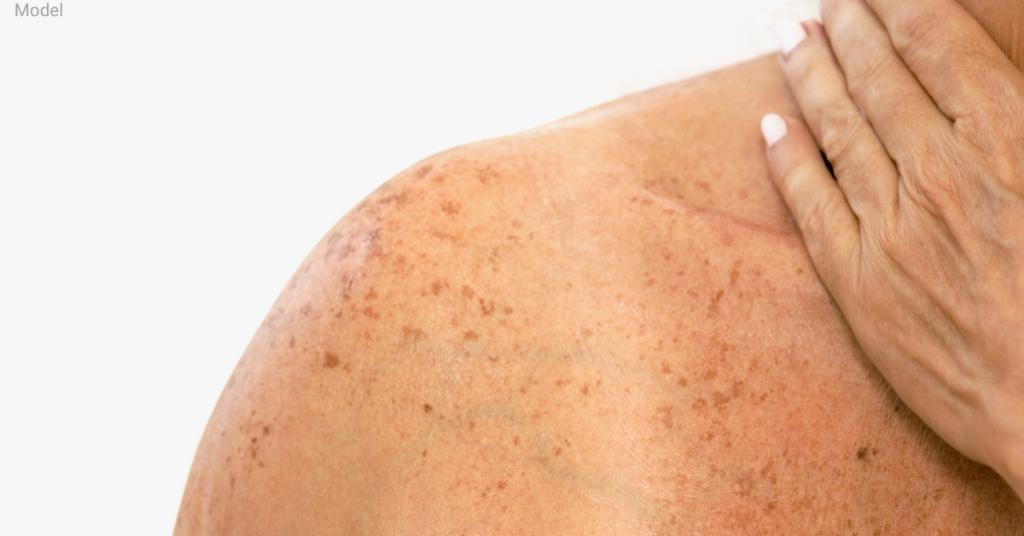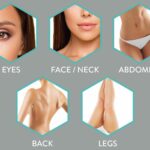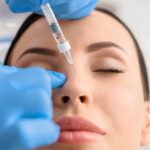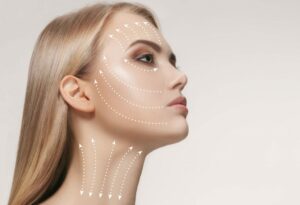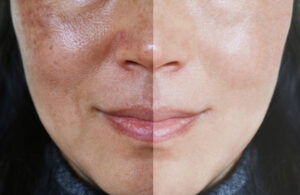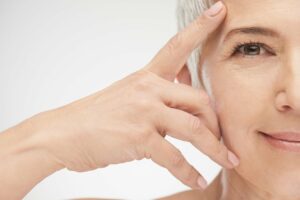The 5 best treatments for sun-damaged skin
What is sun-damaged skin? Sun damage refers to skin conditions that appear as a direct result of sun exposure.
Ultraviolet (UV) electromagnetic (light) radiation in sunlight damages skin cells and can cause various skin problems, some more serious than others. Even if you think that you don’t burn, sun exposure can still damage your skin. Even a suntan is actually a sign of sun damage, despite the healthy-looking appearance it may give you.
Sun-damaged skin describes premature aging of the skin that might change its appearance or lead to skin cancer due to exposure to ultraviolet (UV) rays. There are two types of UV rays that cause sun-damaged skin: UVA and UVB.
UVA rays are longer waves that activate the skin in an unhealthy way and give you a tan, but they aren’t responsible for the appearance of sunburn. They penetrate the skin deeper than UVB rays, triggering premature aging and skin cancer.
On the other hand, UVB rays are shorter and are what cause sunburns. However, they can also accelerate early signs of aging. UVB rays are considered the most common cause of skin cancer.
What causes sun damage?
Unprotected skin is damaged by prolonged exposure to the sun. A little amount of sun exposure is necessary since it is a significant source of vitamin D, but too much UV radiation can harm the skin’s cellular DNA and result in pigmentation, wrinkles, dryness, sunburn, leathery texture, and even cancer.
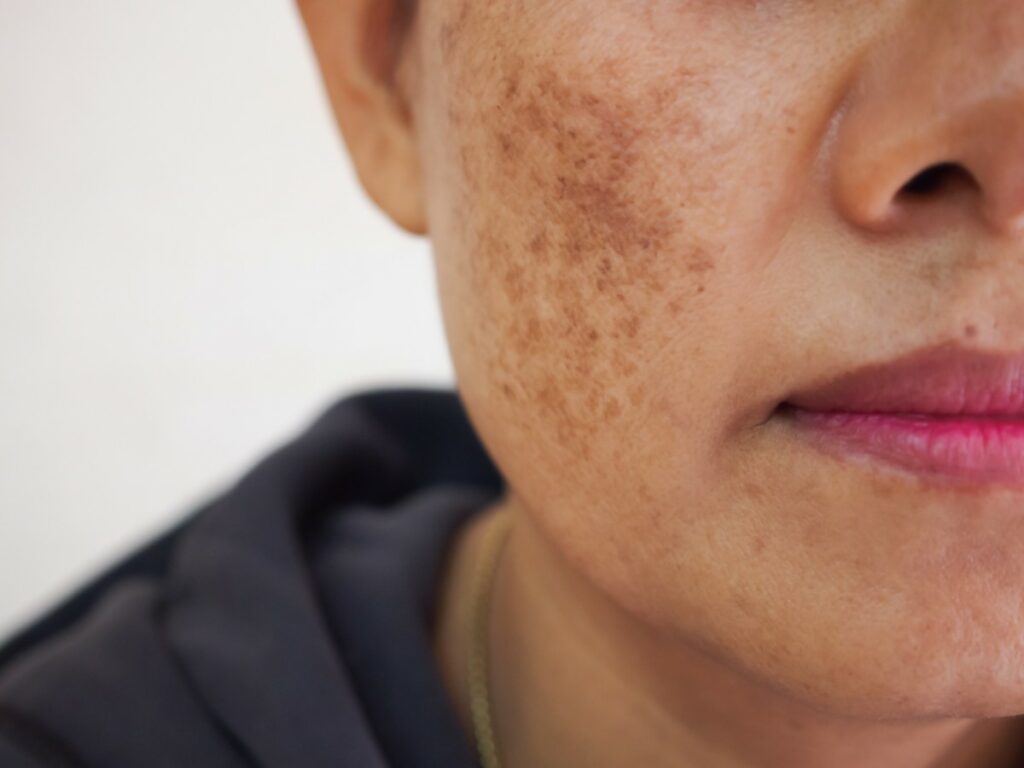
Symptoms and signs of sun damage
- Wrinkling
- Pigmentation changes such as age spots, lentigines, melasma, and freckles
- Decreased skin elasticity
- Rough and uneven skin texture
- Broken capillaries (spider veins)
- Redness and blotchiness
- Thread Veins
- Actinic keratoses
Can sun damage be reversed?
The DNA damage caused by UV radiation cannot be repaired after it has been done to your skin cells. But it doesn’t mean you can’t alter the way your skin looks. Sun-damaged skin can be treated, its effects reduced, or its damage repaired. Treatments can enhance the appearance, tone, and quality of your skin by removing spots and other skin discolorations, reducing wrinkles and fine lines, smoothing out skin, and stimulating the growth of new skin and collagen.
5 top treatments for sun damaged skin
1. Diamond Glow for sun damaged skin
Diamond Glow is one of the best treatments for sun damaged skin. Microdermabrasion, exfoliation, and the injection of customized skin serums are all included in the Diamond Glow procedure. Infusing nourishing serums into the skin at the same time as the device gently eliminates damaged, dead skin cells to reveal fresh, young cells allows for targeted outcomes.
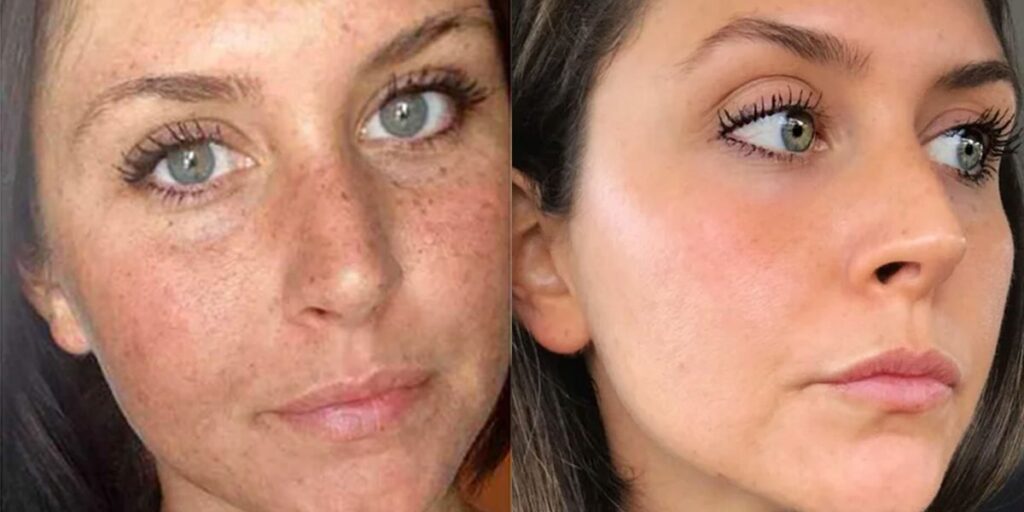
Diamond Glow treatment can also address acne, fine lines, sun damage, dryness, and hyperpigmentation. This rejuvenating treatment also improves skin tone and texture by uncovering beautiful, radiant skin cells.
Optimal results are achieved through a series of treatments determined during a physician consultation. Treatments are comfortable and soothing, taking just a short amount of time. Following the treatment, moisturize the skin and discuss the ideal aftercare regimen. Diamond Glow patients must avoid direct sun exposure for a few days.
2. Chemical peels for sun-damaged skin
Chemical peels can help battle the aesthetic effects of UV exposure even if they cannot be utilized to lessen malignant skin problems.
Chemical peels in particular can aid in lessening the visibility of sun spots, hyperpigmentation, and fine lines and wrinkles.
Chemical peels are a kind of “harsh” exfoliation that removes pigmented skin cells with significant degrees of damage from sun-damaged skin. By removing the topmost layer of skin through exfoliation, chemical peels encourage faster skin cell regeneration. Old cells are replaced by new ones, which lessens the appearance of sunspots, hyperpigmentation, and fine lines and wrinkles.
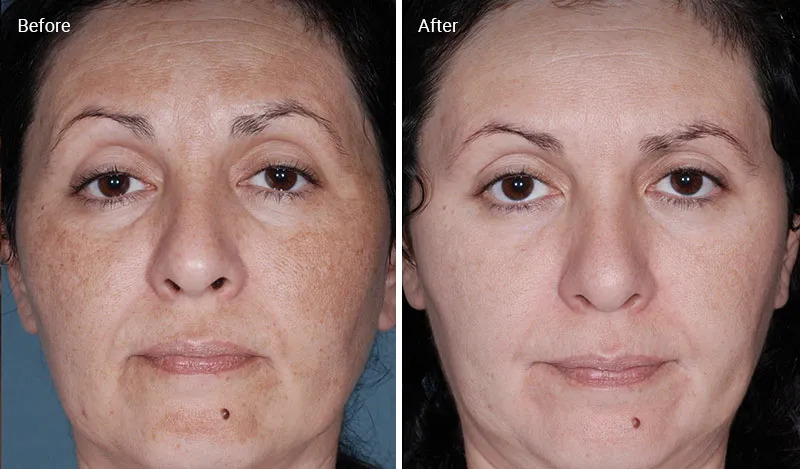
Chemical peels can be used on various regions of the body, however, they are most frequently applied to the face. These areas are some of the most common parts of the body to be exposed to UV rays and they are highly visible, making them common areas for chemical peel treatment.
If you have other areas of concern, discuss this with the skin care specialist administering your chemical peel. The size of the treatment area may alter how long this treatment takes.
3. Lumecca IPL for sun-damaged skin
Lumecca uses an intense pulsed light (IPL) to treat various vascular and pigmented lesions of the body. It utilizes photo thermolysis for a photo facial using a comfortable light treatment and delivers effective and relaxing therapy. Lumecca IPL offers impressive results to sun damage areas, including the face, neck, arms, and legs. You will notice a significant improvement in your skin’s complexion after only one session.
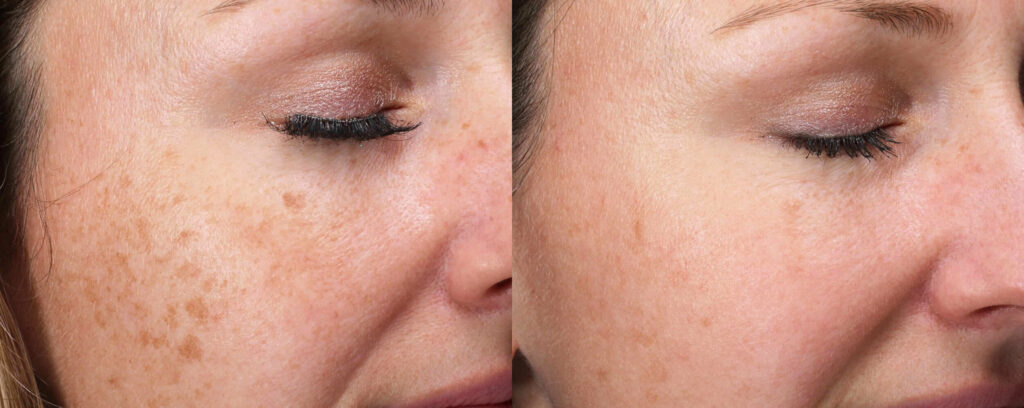
It is a well-liked anti-aging procedure that diminishes and eliminates certain skin hues, including redness, spider veins, and discolored spots. It has a high specificity and selectivity for redness and pigmentation created by sun damage and is one of the most potent treatments with visible results after the first session.
4. Microneedling
Microneedling, sometimes referred to as collagen induction therapy, is a minimally invasive procedure that can help sun-damaged skin look better. Small needles are used in microneedling to make minute punctures in the skin. This triggers the body’s natural healing process, which promotes the production of new collagen and elastin fibers.
These proteins are important for skin health and can help to reduce the appearance of sun damage, including wrinkles, fine lines, and dark spots.
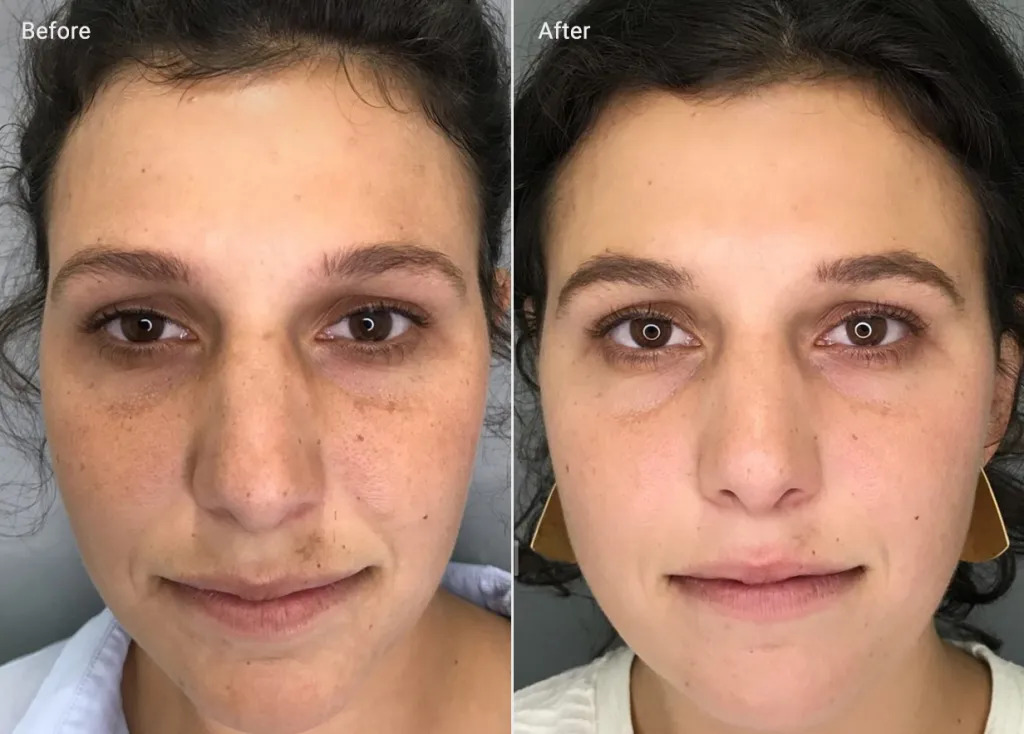
Sun-damaged skin may be treated safely and effectively using microneedling. It is typically well tolerated by patients and has few side effects. The standard course of treatment consists of some sessions separated by 4-6 weeks.
5. PRP treatment for sun-damaged skin
Skin aging caused by the sun includes hyperpigmentation, sunspots, fine lines, and wrinkles. Actually, PRP is a fantastic tool to enhance your general self-esteem and sun-damaged skin. Platelet-rich Plasma (PRP) facials are a well-researched and widely used therapy for treating damaged skin. Our blood contains platelets, which are abundant in the growth factor proteins that promote cell development.
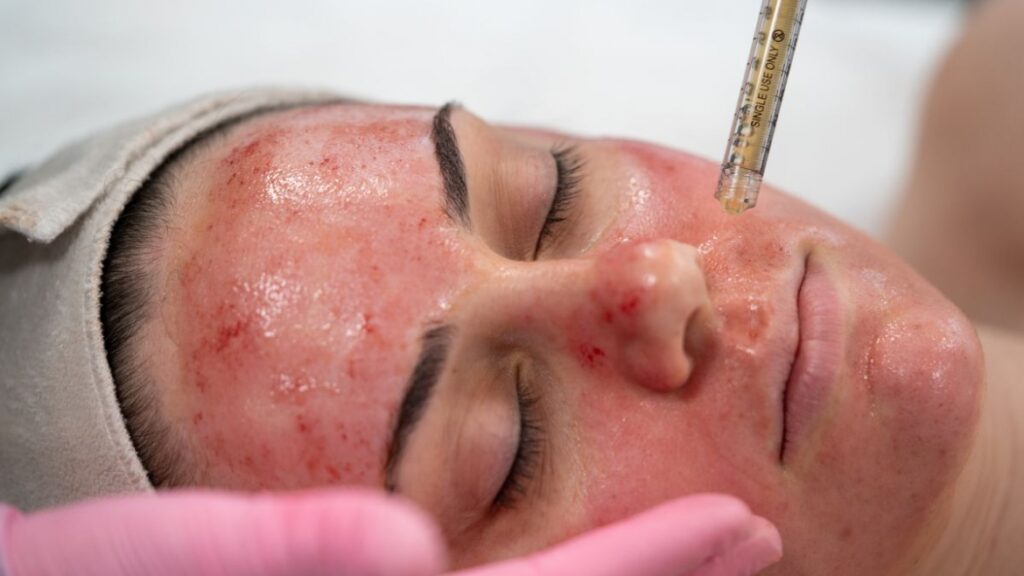
PRP procedures have been demonstrated to enhance skin tone, texture, and complexion without surgery. PRP efficiently rejuvenates the skin by using growth factors to promote the creation of collagen and elastin and lessen the appearance of skin damage.
Take away
These treatments will not protect you from sun damage or skin cancer. They should be taken together with a strict sun care regimen because they aid in treating previously damaged skin as well as other skin issues.
These treatments can reverse the effects of sun damage, and they work best in conjunction with a strong skincare regimen that uses high-quality preventive components and regular UV protection. In addition to reducing aging symptoms, preventing UV damage is crucial for avoiding skin cancer as well. Stay healthy!

